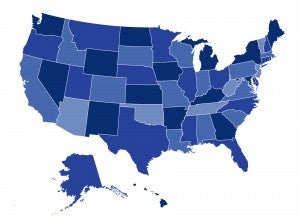
By Justin Giovannelli, JoAnn Volk, Rachel Schwab, and Emily Curran
The Affordable Care Act (ACA) brought about historic coverage gains, providing millions of Americans with vital access to comprehensive health insurance. But for many, high premiums continue to present a major barrier to coverage. States have adopted various policies to make health plans on the individual market more affordable, pursuing one approach more than others: reinsurance.
By 2021, 14 states will operate individual market reinsurance programs, each designed to moderate premium increases and provide market stability by offsetting some of the costs insurers bear while covering enrollees with high medical expenses. State-run reinsurance programs have a track record of reducing premiums and providing market stability by encouraging insurer participation, and states can partially finance reinsurance with federal dollars available under the ACA’s Section 1332 Waivers.
In a new issue brief for the Commonwealth Fund, CHIR experts explore the benefits and limitations of state-run individual market reinsurance programs by analyzing premium, enrollment and insurer participation data, as well as key program design decisions for states. The study finds that, while reinsurance has lowered premiums and helped ensure stable insurer participation in the health insurance marketplaces, premium reductions often only benefit unsubsidized consumers, and the impact on coverage take-up is unclear. The authors note that other policies, such as additional premium subsidies, may offer a more comprehensive affordability solution. Further, authors describe the potential challenges of financing a state reinsurance program, particularly as many states face budget shortfalls during the COVID-19 crisis, underscoring the importance of federal leadership and support to improve health insurance affordability.
You can read the full brief for the Commonwealth Fund here.

